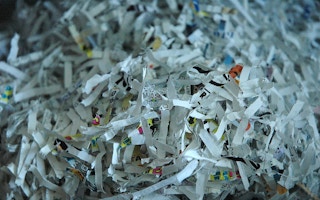Sustainability reporting is an ineffective, bloated, dead system. Sure, it’s added new levels of transparency. Tables of data and statistics now track all manner of sustainability metrics.
If I look hard enough, I can find wastewater effluent levels for an Apple factory in Dongguan, China. But, that’s just it. I have to dig. In today’s fast-paced, hyper-connected world, who really cares enough or has the time?
Reporting is also bloated. You have at least three major mechanisms to work with. The Global Reporting Initiative (GRI) is the most popular girl in school. But, just like the head cheerleader, GRI has to continually justify its top spot by following the latest fads.
GRI is notorious for reinventing standards seemingly to keep people on their toes. It does nothing, however, to make reporting more effective or user-friendly. Now we see sustainability reports in the hundreds of pages. Never mind the trees felled to print these things. If I’m looking for a cure for insomnia, I’d rather read Tolstoy.
And now we begin the annual ritual of creating our 2019 reports. Even though I’d guess 95 per cent of you reading this would agree reports are generally useless, we’re somehow expected to spend time and resources on an exercise in futility. In fact, recent research by GlobeScan found investors, on average, feel only about 10 per cent of the information in sustainability reports is useful.
“
GRI is notorious for reinventing standards seemingly to keep people on their toes. It does nothing, however, to make reporting more effective or user-friendly.
The scenario about to play out in headquarters around the world is something like this.
Communication Director: Okay everyone. It’s time to put together this year’s sustainability report. Let’s re-engage that consulting firm from last year. They already have a copy of the report so it’ll be easy for them to copy and paste.
Marketing Manager: Great. I’ll get a couple new testimonials from clients about how environmentally friendly we are.
Procurement Lead: Perfect, and I’ll gather up this year’s data from that small cohort of factories so we can update our tables.
PR Director: All that sounds like a good plan. We’ll revise our standard press release template to go out when the report’s ready.
Communication Director: Let’s not forget to have KPMG sign off on our GRI measures as well. I’m looking forward to seeing our new report.
In more efficient board rooms around the world, though, a very different conversation is happening.
Communication Director: Okay everyone. It’s time to put together this year’s sustainability report. Before we start, it’s important to refresh our materiality map and get a good understanding of what our external stakeholders are seeing in the market.
Operations Head: I’ve engaged a firm to help us with the interviews since they have a stronger finger on what’s happening globally, in each market, and in our industry. We’re working with our auditing teams to gather revised data as well.
Marketing Director: Great. Once we have that new mapping I’ll get testimonials from clients that relate to our key focus areas for this year’s report. We’re interviewing internal stakeholders right now to include some of their perspectives and stories too. I’d like to engage the same graphic design firm as last year. They did a great job with the visual impact of the report.
PR Director: All that sounds like a good plan. Our team will work with the marketing team to develop the copy for this year’s report. We’re still trying to figure out the storyline, but it’s almost done. We should also set the schedule for our internal and external launch events and see what worked or didn’t work to drive engagement from last year.
Communication Director: I’d also like to see us think through how to add better digital to what we’re doing. Let’s aim to move the entire thing online and even put in a real-time monitoring mechanism. I’ll coordinate that with you all offline.
Companies like MTR Hong Kong, Morrisons UK, and Downer Australia have realised the potential impact “reporting” can have. Beyond a ticking-boxes exercise, reporting can generate a true feedback loop with stakeholders when done properly.
To accomplish this, each of these next-generation reports has similar characteristics.
- They put the stakeholder first. Each stakeholder wants to get something unique out of reading a report. Therefore, it makes sense to have a tailor-made approach to reporting. Companies are creating separate reports that address the specific needs of a particular stakeholder group, usually gathered through a materiality exercise.
- They tell a story. In reality, these reports aren’t reports at all. They’re stories told in a way that is interesting to the reader. This means they are more visually grounded instead of data-driven, focus on what’s most important, and keep a theme throughout.
- They are succinct. I pray for the day when 300-page reports are a thing of the past. Next-generation reports are as short as a couple of pages. Sometimes they come in the form of brochures. Other times they are purely digital or in video form.
It’s often said common sense is not so common. This certainly holds true in the case of sustainability reporting. True communication’s professionals know there is little in the way of return on these investments.
For all the work put in, how many people actually read sustainability reports? Are reports even impacting meaningful change from an altruistic perspective? The answers are clear.
Yet, sustainability reports are a necessary evil. Governments and boards have an insatiable appetite for these things. So, feed their need. Give them just enough in your reports, but leave the lion’s share of your resource capacity for something that truly resonates with everyone else.
Interestingly, GlobeScan found internal employees are more influenced by the content of a report than governments or boards of directors. How often do you consider them when writing?
Sustainability is as much as educating and communicating with stakeholders as anything. What better way to do this than through a singular piece of creative, impactful, holistic marketing collateral? That’s what we see as a next-generation sustainability report.
John Pabon is founder and chief advisor of Shanghai-based sustainability reporting consulting firm Fulcrum Strategic Advisors. This story was originally published on LinkedIn.









